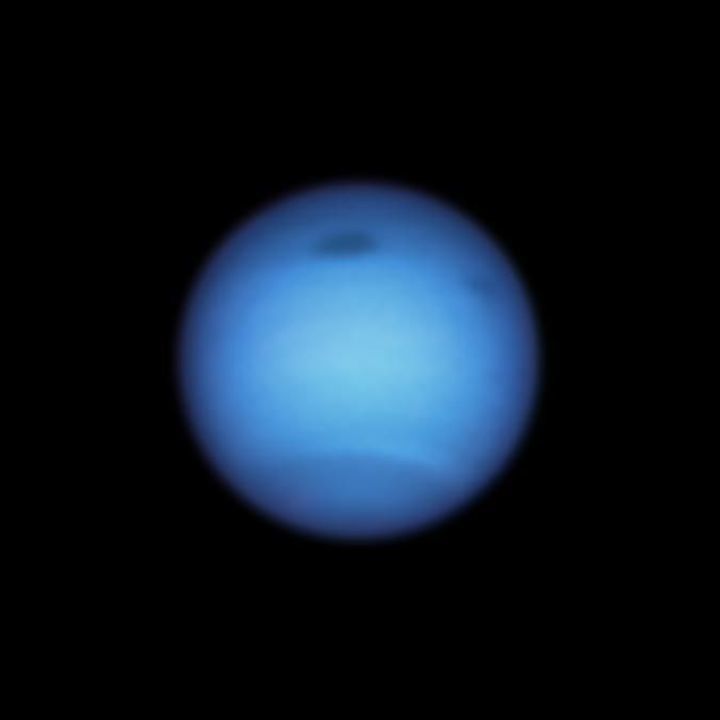25.12.2020

Astronomers were surprised to see two storms on Neptune. It’s possible the planet’s giant storm spawned another when it abruptly changed directions. (Image credit: NASA, ESA, STScI, M.H. Wong (University of California, Berkeley), and L.A. Sromovsky and P.M. Fry (University of Wisconsin-Madison))
A dark storm on Neptune abruptly switched directions and started moving away from almost certain death, puzzling astronomers.
NASA’s Hubble Space Telescope first spotted the vortex in 2018. A year later, the storm began drifting southward toward Neptune’s equator, following the path of several storms before it. Usually, these dark spots on Neptune live for a few years before either vanishing or fading away. However, the storm mysteriously stopped moving south and made a sharp u-turn, drifting back northwards. At the same time, astronomers spotted a second, smaller dark spot on the planet.
They theorize that this smaller “cousin” storm may be a piece of the original vortex that broke off and drifted away.
"We are excited about these observations because this smaller dark fragment is potentially part of the dark spot’s disruption process," Michael H. Wong of the University of California at Berkeley said in a NASA statement. "This is a process that's never been observed. We have seen some other dark spots fading away and they're gone, but we've never seen anything disrupt, even though it’s predicted in computer simulations."
Although Hubble has tracked similar storms on Neptune over the past 30 years, astronomers have never seen such unpredictable atmospheric behavior.
The current storm, which is 4,600 miles (7,403 kilometers) across (bigger than the Atlantic Ocean) is the fourth-darkest spot Hubble has tracked since 1993. These storms are high-pressure systems that rotate clockwise due to the planet’s rotation (unlike hurricanes on Earth, which are low-pressure systems that rotate counterclockwise).
Typically, as storms drift toward Neptune’s equator, the Coriolis effect that typically keeps them stable starts to weaken and the storm disintegrates. Yet, unlike past observed storms and computer simulations that show storms following a more-or-less straight path to the equator, this latest vortex didn’t migrate into this “kill zone.”
"It was really exciting to see this one act like it's supposed to act and then all of a sudden it just stops and swings back," Wong said in the same NASA statement. "That was surprising."

Spotting a smaller storm that potentially broke off from the larger vortex was also surprising. Astronomers informally call the smaller storm "dark spot jr." This "jr." is still quite large, stretching 3,900 miles (6,276 km) across. Although researchers can’t prove that the smaller storm broke off from the larger one, Wong said it’s possible that shedding that fragment was enough to stop the larger storm from continuing on towards the equator.
This latest giant storm on Neptune is the best-studied so far on the planet. For instance, when Hubble first spotted the storm in 2018, the telescope saw bright companion clouds around the vortex. Those clouds are now gone, having disappeared when the storm stopped drifting southward. It’s possible that the lack of these clouds could reveal some secrets about how the dark spots evolve.
There is still a lot of mystery surrounding storms on Neptune, but NASA’s Outer Planet Atmospheres Legacy (OPAL) program is standing by to crack those mysteries. But, for now, astronomers will keep their eyes on this mysterious dark spot on Neptune.
Quelle: SC
